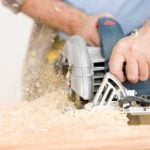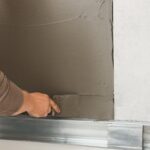When it comes to homeownership, there are various terms and concepts that homeowners need to be familiar with. One such term is “capital improvement.” But what exactly does it mean? In this article, we will delve into the world of capital improvements on a home and explore its significance for homeowners.
A capital improvement can be defined as any renovation or addition made to a property that enhances its value, extends its lifespan, or adapts it for new uses. It goes beyond regular maintenance and repairs by bringing about substantial changes that have a lasting impact. Understanding capital improvements is crucial for homeowners because they represent long-term investments in their properties.
Unlike routine repairs or maintenance tasks, which are considered expenses, capital improvements are considered investments because they increase the value of a property over time. These improvements can range from small-scale projects like installing energy-efficient windows to more extensive renovations such as remodeling a kitchen or adding an additional room. By differentiating between regular home improvements and capital improvements, homeowners can make informed decisions about allocating their resources effectively.
Having a clear understanding of capital improvements allows homeowners to make strategic choices that not only enhance their living spaces but also have potential financial benefits. In this article, we will explore how capital improvements differ from regular maintenance/repairs, delve into the tax implications of these improvements, identify which ones add value to a home, discuss financing options, address common misconceptions surrounding them, and provide considerations for hiring professionals or engaging in DIY projects.
By the end of this article, readers will have gained valuable insights into the world of capital improvements on homes. They will realize the importance of well-planned projects that can not only elevate their living spaces but also contribute to long-term investment opportunities. So let us embark on this journey together as we unravel the mysteries of capital improvement and discover how it can truly transform our homes.
Differentiating between capital improvements and regular maintenance/repairs
Capital improvements on a home are distinct from regular maintenance and repairs. While routine repairs are necessary for the ongoing upkeep of a property, capital improvements are considered investments in the home that enhance its value and functionality. It is crucial for homeowners to understand this distinction to make informed decisions about their property.
Regular maintenance and repairs refer to tasks done to maintain the condition of a home or fix minor issues. These types of expenses are typically considered ordinary and necessary for the regular use and upkeep of a property. Examples include painting walls, fixing leaky faucets, or repairing a broken window. Regular maintenance and repairs, although important, do not significantly increase the value of the home.
On the other hand, capital improvements go beyond basic maintenance tasks and involve substantial changes or additions that enhance the overall quality, value, or utility of a property. Capital improvements have long-lasting benefits last for years and generally increase a home’s worth.
Examples of capital improvements include renovating a kitchen or bathroom, adding a swimming pool or patio, installing energy-efficient windows or solar panels, or building an addition to expand living space. These enhancements can improve comfort, increase curb appeal, promote energy efficiency, or accommodate lifestyle changes.
Understanding the difference between regular maintenance/repairs and capital improvements is essential because it affects how these expenses are treated for tax purposes. While regular maintenance costs cannot be deducted from taxes as they are considered part of normal homeownership expenses, capital improvements may offer tax benefits. Homeowners can often deduct certain expenses associated with capital improvements when they sell their homes by considering them as part of their cost basis calculations.
Understanding the tax implications of capital improvements
How capital improvements can affect a homeowner’s taxes
When it comes to capital improvements on a home, one important factor that homeowners should consider is the potential tax implications. Unlike routine repairs and maintenance, capital improvements have the potential to impact a homeowner’s taxes in various ways. It is crucial to understand these implications to make informed decisions and potentially take advantage of any tax benefits available.
Capital improvements are generally considered as investments in the property rather than expenses. As a result, they can have a significant impact on a homeowner’s tax liability. While routine repairs and maintenance are generally not deductible, capital improvements may be eligible for deductions or other tax benefits.
Potential tax benefits of capital improvements
One potential tax benefit of capital improvements is the ability to deduct certain expenses related to these improvements. For example, if you installed energy-efficient windows or upgraded your home’s insulation, you may qualify for the Residential Energy Efficient Property Credit. This credit allows homeowners to claim up to 30% of the cost of qualifying upgrades as a credit on their federal taxes.
Additionally, certain capital improvements may also have an impact on your property’s depreciation value. Depreciation refers to the gradual decrease in value that properties experience over time due to wear and tear. By documenting and reporting capital improvement expenses properly, homeowners may be able to lower their taxable income through depreciation deductions.
Tips for documenting and reporting capital improvements for taxes
To ensure that you maximize any potential tax benefits from your capital improvements, it is essential to document and report them correctly. Here are some tips:
- Keep detailed records: Maintain comprehensive records of all receipts, invoices, contracts, and permits related to your capital improvement projects.
- Separate costs: Clearly separate the costs of routine maintenance/repairs from those of actual capital improvements when keeping records.
- Consult with a tax professional: Seek guidance from a tax professional or accountant who can provide specialized advice tailored to your specific situation.
- Understand local regulations: Familiarize yourself with any specific local regulations or requirements regarding the documentation and reporting of capital improvements for tax purposes.
Understanding the tax implications of capital improvements is crucial for homeowners looking to maximize their investment in their properties. By taking advantage of potential deductions and credits, homeowners can potentially save money on their taxes while enjoying the benefits of a well-improved home. It is always advisable to consult with a tax professional or accountant to ensure compliance with all applicable tax laws and regulations.
Identifying capital improvements that add value to a home
Increasing Curb Appeal
One of the most effective ways to add value to a home through capital improvements is by enhancing its curb appeal. This refers to the overall attractiveness of a property when viewed from the street.
Improving the exterior of a home can make a significant difference in its aesthetic appeal and ultimately increase its resale value. Some popular capital improvements that boost curb appeal include landscaping, installing new windows or doors, repainting the exterior, and adding decorative elements such as shutters or a front porch.
Upgrading Kitchen and Bathrooms
The kitchen and bathrooms are often considered the most important rooms in a home, so upgrading these areas with quality materials and modern fixtures can have a substantial impact on its value. Capital improvements in the kitchen may include installing new countertops, cabinets, or appliances. In bathrooms, homeowners might consider upgrading the shower or bathtub, replacing outdated tiles or flooring, and installing energy-efficient plumbing fixtures.
Adding Additional Living Space
Expanding and adding living space to a home is another way to increase its value through capital improvements. This can be achieved by finishing or renovating an existing basement, converting an attic into a livable space, or constructing an addition to the home. The extra square footage not only provides more usable space for homeowners but also appeals to potential buyers who are willing to pay a premium for more room.
Improving Energy Efficiency
In today’s environmentally conscious world, increasing energy efficiency has become increasingly important for homeowners. Capital improvements that focus on reducing energy consumption can not only save money on utility bills but also add value to a home. Examples of energy-efficient enhancements include adding insulation to walls or attics, upgrading windows and doors with energy-efficient models, installing solar panels, replacing outdated heating or cooling systems with more efficient ones, and incorporating smart technology for optimized energy usage.
Overall, identifying capital improvements that add value to a home is crucial for homeowners looking to invest in their property. By focusing on enhancing curb appeal, upgrading key areas such as kitchens and bathrooms, adding living space, and improving energy efficiency, homeowners can potentially increase the resale value of their homes while enjoying the benefits of these improvements themselves. It’s important to carefully consider each potential improvement and its potential return on investment before deciding which projects to pursue.
Exploring financing options for capital improvements
Capital improvements on a home are often significant projects that require a substantial investment. While some homeowners may have the means to pay for these improvements out of pocket, many others may need to explore financing options. This section will discuss potential funding sources for capital improvements, such as home equity loans or personal loans, and provide tips on budgeting and prioritizing these projects.
One popular option for financing capital improvements is through a home equity loan. This type of loan allows homeowners to borrow against the equity they have built up in their property. The loan amount is typically based on the difference between the current market value of the home and the remaining mortgage balance. Home equity loans often have lower interest rates compared to other types of loans since they are secured by the property itself.
Another option for financing capital improvements is through a personal loan. Personal loans are unsecured loans that can be used for various purposes, including home improvements. These loans typically have higher interest rates compared to home equity loans but do not require collateral. Personal loans are generally easier and quicker to obtain compared to other types of financing options.
When considering financing options for capital improvements, it is important for homeowners to carefully evaluate their financial situation and choose an option that aligns with their needs and goals. Here are some tips on how to approach this process:
- Assess your budget: Before applying for any loan or financing, assess your current financial situation and determine how much you can afford to borrow without overextending yourself.
- Prioritize projects: Create a list of capital improvement projects you want to undertake and prioritize them based on urgency and estimated costs.
- Shop around for the best rates: Research different lenders or financial institutions offering home equity loans or personal loans, and compare interest rates, terms, fees, and repayment options.
- Consider tax benefits: Keep in mind that some capital improvements may be eligible for tax deductions or credits, which could help offset the cost of financing.
- Read the fine print: Before committing to any loan or financing agreement, carefully review the terms and conditions, including repayment schedules, prepayment penalties, and any other applicable fees.
By exploring various financing options and approaching them responsibly, homeowners can find a suitable way to fund their capital improvements while ensuring they stay within their budget and achieve their desired home improvements.
Addressing common misconceptions about capital improvements
Capital improvements on a home are often misunderstood, leading to misconceptions that can deter homeowners from making beneficial investments in their properties. It is crucial to address these misconceptions and provide accurate information to help homeowners make informed decisions. This section aims to debunk common myths surrounding capital improvements and clarify any misunderstandings.
One common misconception about capital improvements is that they are too expensive and not worth the investment. While it is true that some capital improvements can be costly, it is important to consider the long-term benefits they bring.
These improvements are intended to increase the value of a home and enhance its functionality, which can pay off in the future when selling the property. For example, installing energy-efficient windows may be initially expensive but can lead to lower energy bills and an increased resale value.
Another misconception revolves around the idea that all home improvement projects automatically qualify as capital improvements. In reality, only certain types of renovations meet the criteria for being classified as a capital improvement. Generally, for an improvement to qualify as capital, it must add value or prolong the useful life of the property substantially.
Routine repairs and maintenance do not fall under this category. It is essential for homeowners to understand this distinction in order to accurately differentiate between regular expenses and capital improvement investments.
Additionally, there is a misconception that capital improvements have minimal impact on a home’s resale value. On the contrary, well-planned and properly executed capital improvements can significantly increase a home’s market value.
Upgrades such as kitchen remodels, bathroom renovations, or adding an additional bedroom are considered high-impact improvements that potential buyers look for when purchasing a home. Understanding how these investments positively affect the overall value of a property can help homeowners prioritize their capital improvement projects.
| Misconception | Reality |
|---|---|
| Misconception: Capital improvements are too expensive and not worth the investment. | Reality: While some capital improvements can be costly, they bring long-term benefits such as increased resale value and improved functionality. |
| Misconception: All home improvement projects qualify as capital improvements. | Reality: Only specific renovations that substantially add value or prolong the useful life of a property qualify as capital improvements. |
| Misconception: Capital improvements have minimal impact on a home’s resale value. | Reality: Well-planned and executed capital improvements such as kitchen remodels or bathroom renovations can significantly increase a home’s market value. |
Considerations for hiring professionals or DIY for capital improvements
When it comes to capital improvements on a home, one of the important considerations homeowners must make is whether to hire professionals or take the do-it-yourself (DIY) approach. This decision can have significant implications for both the outcome of the project and the homeowner’s budget. There are pros and cons to each option, and it ultimately depends on factors such as complexity, skill level, time constraints, and budget.
Hiring professionals for capital improvements offers several advantages. First and foremost, professionals bring expertise and experience to the table. They have specialized knowledge in their respective fields and can ensure that the job is done correctly and efficiently. For certain projects that require technical skills or certifications, such as electrical or plumbing work, it may even be legally required to hire licensed professionals. Additionally, professional contractors often have access to specialized tools and equipment that homeowners may not possess.
On the other hand, tackling capital improvements as a DIY project can be appealing for homeowners who want to save money or enjoy hands-on work. One of the main advantages of DIY is cost savings since labor fees can be significant when hiring professionals.
DIY also provides homeowners with a sense of pride in completing a project themselves and allows for customization based on personal preferences. However, it’s important to recognize limitations – attempting complex or potentially dangerous projects without proper knowledge or experience can result in costly mistakes or even safety hazards.
Determining whether to hire professionals or opt for DIY requires careful consideration of various factors specific to each project. Some capital improvements are more suitable for professional assistance due to complexities or high-risk nature, including structural modifications, major electrical rewiring, roof replacements/installations, HVAC system installations/replacements, etc.
Homeowners should evaluate their own skills realistically before deciding on a DIY approach – if inexperienced and lacking necessary expertise, attempting certain projects could end up being more costly in terms of mistakes made.
If hiring professionals seems like the best option but budget concerns arise, it’s worth noting that there might be opportunities for compromise. Homeowners can consider a hybrid approach by hiring professionals for certain aspects of the project and taking on less technical tasks themselves. This way, they can still benefit from professional expertise while minimizing costs.
Conclusion
In conclusion, understanding and planning for capital improvements on your home is crucial for homeowners. A capital improvement is a long-term investment that distinguishes itself from routine repairs or maintenance. By making strategic improvements to your property, you not only enhance its value but also potentially benefit from tax advantages.
Differentiating between capital improvements and regular maintenance/repairs is essential for homeowners to make informed decisions about their investments. While routine repairs are necessary for the upkeep of a home, capital improvements go beyond that by enhancing the property’s value and functionality. Understanding this distinction allows homeowners to prioritize their expenditures and allocate their resources effectively.
The tax implications of capital improvements are another important aspect to consider. By properly documenting and reporting these improvements, homeowners may be eligible for deductions or tax benefits. This can help offset some of the costs associated with capital improvements, making them even more valuable in the long run.
It is important to emphasize that well-planned capital improvements have the potential to significantly increase the value of your home. By carefully considering which improvements are most likely to yield a return on investment, homeowners can make strategic choices that will benefit them in the future. Whether it’s renovating an outdated kitchen or adding energy-efficient features, every improvement has the potential to enhance both the aesthetic appeal and marketability of a property.
Frequently Asked Questions
What does the IRS consider capital improvements on home?
The IRS considers capital improvements on a home as major upgrades or renovations that add value to the property, prolong its useful life, or adapt it to new uses. These improvements are considered to be more than just repairs or maintenance and generally involve substantial investments of time, effort, and money.
Examples of capital improvements may include adding a new room, installing a swimming pool, upgrading the plumbing or electrical systems, or replacing the roof.
What are capital improvements on a property?
Capital improvements on a property are enhancements made to increase its value or extend its useful life. Unlike regular repairs or maintenance tasks that are necessary to keep the property in good condition and operational, capital improvements go beyond basic upkeep and often require significant expenditures.
These improvements are intended to improve the functionality, aesthetics, energy efficiency, or overall quality of the property. They can encompass various areas such as structural modifications, landscaping projects, technological upgrades, or interior renovations.
Is painting a house a capital improvement?
In most cases, painting a house is not considered a capital improvement by the IRS because it is seen as routine maintenance rather than a substantial improvement that significantly enhances the value or extends the useful life of the property. Painting is typically viewed as an ongoing task necessary to preserve and refresh the appearance of the home but does not entail a major investment compared to other types of renovations or upgrades.
However, there may be specific circumstances where painting could be classified as a capital improvement if it involves extensive work such as stripping old paint layers, repairing damaged surfaces, or using specialized techniques that substantially increase the home’s value. Consulting with tax professionals would provide more precise guidance based on individual situations and applicable tax regulations.

I’m thrilled to have you here as a part of the Remodeling Top community. This is where my journey as an architect and remodeling enthusiast intersects with your passion for transforming houses into dream homes.





